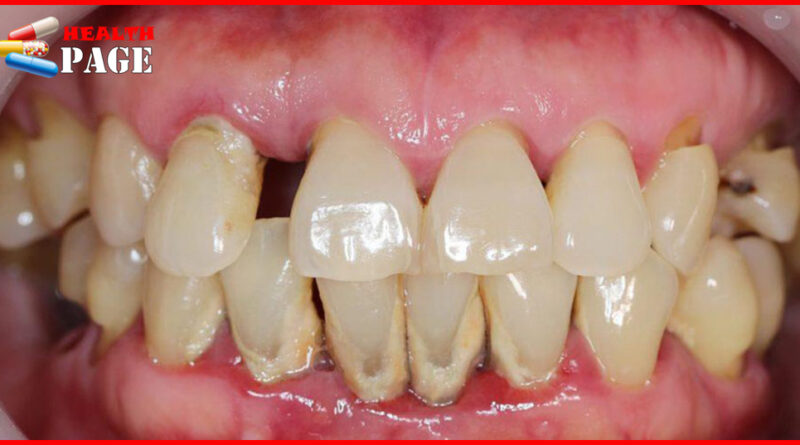Causes and treatment of chronic periodontitis
Chronic periodontitis is a inflammation that affects the gums and periodontal tissues. It is a destructive disease characterized by the formation of periodontal pockets and inflammationhttps://healthypost.co.uk/what-does-dental-plaque-look-like-how-to-remove-dental-plaque/ of the pocket walls, alveolar bone resorption and gradual loosening of teeth. It is the main cause of tooth loss in adults.
Causes of chronic periodontitis:
Although bad habits are not the main factor causing periodontal disease, they can affect the treatment effect of periodontal disease and even accelerate the development of periodontal disease. These bad habits can generally include the following:
(1) One-sided chewing habits. This can cause a large amount of dental plaque and tartar to accumulate on the surface of the unused side teeth, thus causing periodontal disease. At the same time, the teeth on the dominant side may be severely worn, causing food to get stuck in the teeth, causing or aggravating periodontal disease.
(2) Picky eating habits: This can cause a lack of protein and vitamins A, C, and D, thereby inducing or aggravating periodontal disease.

(3) Grinding and clenching teeth at night. This can cause severe wear of teeth, increase the burden on periodontal tissues, cause food impaction, or aggravate existing periodontal lesions.
(4) Biting lips, pens, nails, mouth breathing, etc. These can increase the load on the periodontal tissue, cause the front teeth to shift, cause symptoms such as food stuck in the teeth, or aggravate the original lesions of the periodontal tissue.
(5) Smoking habits. Smoking has an impact on bones throughout the body and can increase bone absorption. Alveolar bone absorption is a pathological process of periodontal disease.
(6) Occupational habits. For example, shoemakers and carpenters are accustomed to biting nails, shoe needles or threads with their teeth while working, which can cause damage to the teeth and periodontium, such as chipping of the crown or loosening or displacement of the front teeth.
What are the treatments for chronic periodontitis?
Phase 1: Basic treatment
This applies to every patient with periodontal disease. Patients with acute gingival abscesses, acute periodontal abscesses, acute necrotizing gingivitis and other emergencies should be treated according to the situation. Teeth that cannot be retained should be extracted to maintain periodontal health for a longer period of time. Supragingival cleaning, subgingival scaling, root planing, etc. should be performed to remove supragingival and subgingival plaque, tartar and necrotic cementum. If necessary, temporary fixation, adjustment and drug-assisted treatment of loose teeth should be performed.

The task of this stage is to eliminate local pathogenic factors and enhance patient awareness. Therefore, it is very important to provide oral hygiene guidance to patients and correct their bad living habits. Patients should understand the causes of periodontitis and the importance of establishing good oral hygiene habits, and teach them how to remove plaque, such as the correct brushing method and the correct use of plaque removal tools such as dental floss, toothpicks and interdental brushes. The efficacy should be re-evaluated after basic treatment.
Stage 2: Surgery
Surgical treatment is the second stage of periodontal treatment. Generally, a comprehensive re-evaluation of the periodontal condition is performed 1 to 3 months after basic treatment. This includes: plaque control, periodontal pocket depth, bleeding on probing, alveolar bone morphology, etc. If there are still periodontal pockets larger than 5 mm and bleeding on probing, or the gingiva and alveolar bone are abnormal in morphology and need to be repaired, the type of periodontal surgery can be selected according to the specific situation and location. Do not perform periodontal surgery without basic periodontal treatment and good control of inflammation.
Phase III: Restorative Treatment
The restorative treatment phase is the third phase of periodontal treatment. It is usually perform 2 to 3 months after periodontal surgery. Because the morphology and position of the periodontal tissues are basically stable at this time. Permanent restorative treatment and fixation of loose teeth can be perform. Patients who need orthodontic treatment can also undergo this period.
Stage 4: Supportive care
Supportive treatment is the fourth stage of periodontal treatment, which was previously call the maintenance period. It is also a very important stage. During this stage, regular check-ups are require to check the patient’s plaque control, gingival inflammation, periodontal pocket depth, attached water, changes in alveolar bone, and control of risk factors. If problems are found, necessary re-treatment will be conducted. The doctor will determine the interval for the patient’s check-up based on the specific situation of each patient. Usually, a check-up is require every 3 to 6 months, and an X-ray is taken about once a year.
In short, the treatment of periodontal disease is a meticulous and patient job. It requires close cooperation between doctors and patients, and perseverance to achieve satisfactory, stable and long-term results.


